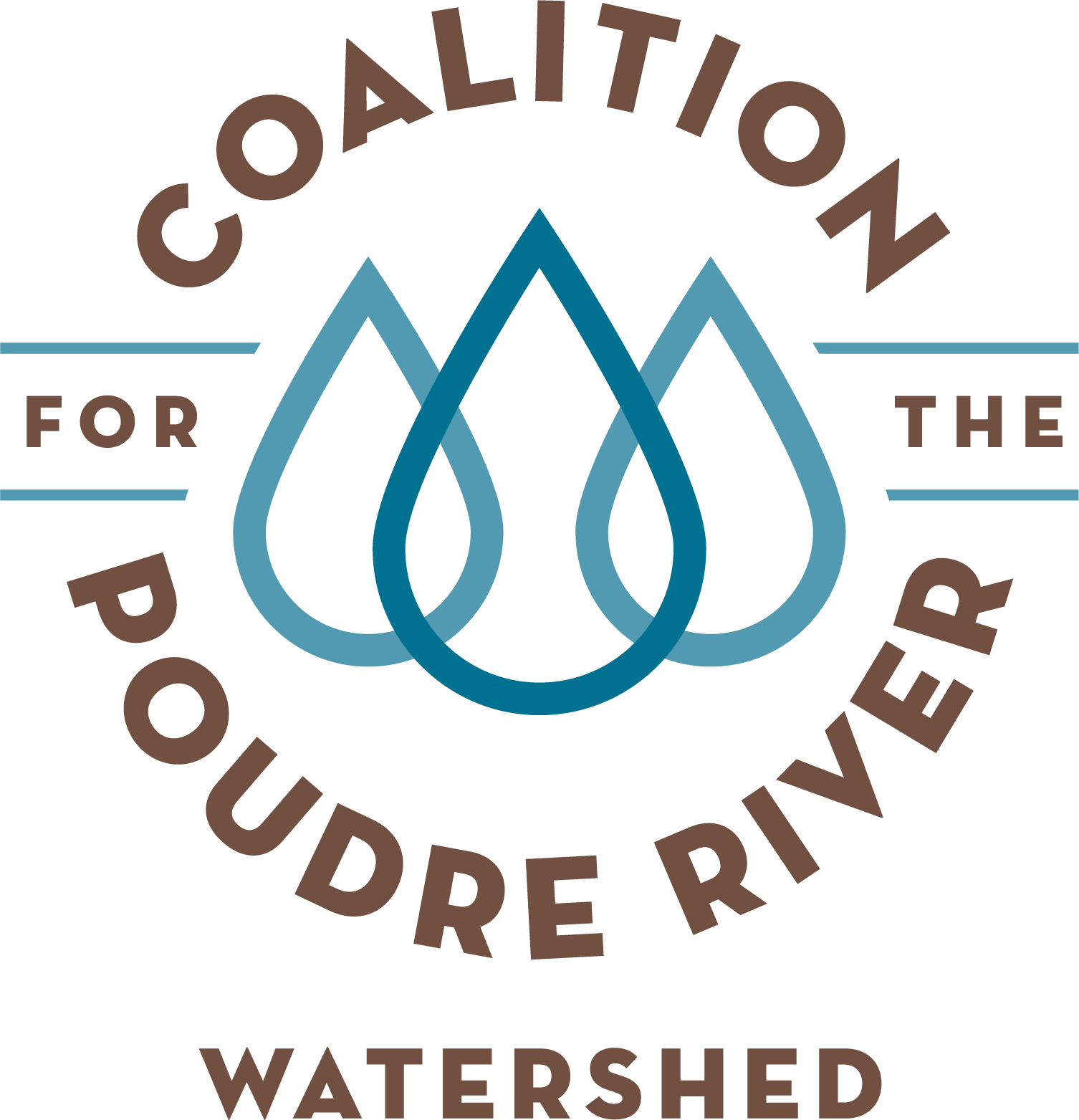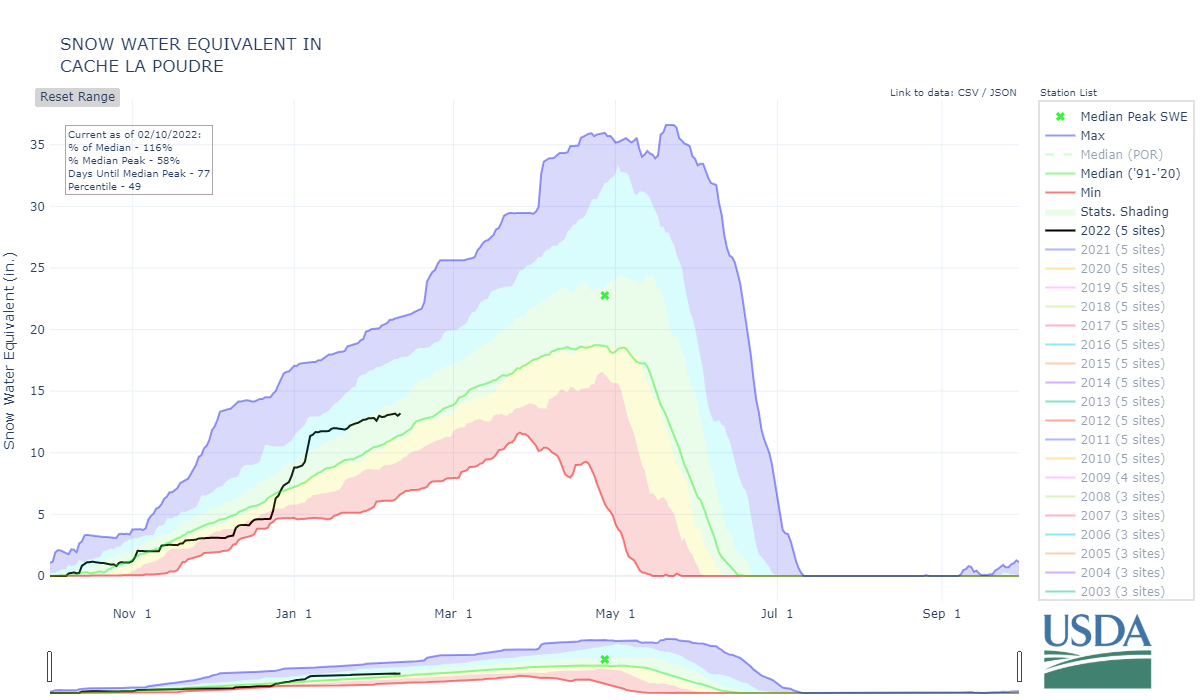The Salvation in Your Snowpack
Winter Is Here. So Is Your Beer. During this time of year we enjoy slipping, sliding, riding, skating and otherwise zooming across the frosty landscape, cruising on the carpet of glistening crystalline water that makes it all possible.
This source of recreational joy is also your drinking water and the main ingredient in some of our favorite après beverages. When that precious snow melts, it produces streamflow that feeds rivers, lakes and faucets. Mountain snowpack provides 60 percent to 80 percent of all freshwater on earth. Most Coloradans depend on high mountain snowpack for our household water. It also provides for irrigation, livestock, recreation, industrial applications, and it supports our thriving Front Range breweries. About 40 percent of our water comes from the highest 20 percent of the land. We aren’t the only ones reliant on Colorado’s high-country watersheds. We also deliver water to 18 other states and Mexico. The four major river systems that originate in our mountains flow to one-third of the landmass of the lower 48 states.
Mountain Snowpack: Our Water Storage Tank
In the previous century, our legendary Colorado snowpack was reliably ample, with pockets of snow often lingering at higher altitudes well into the following autumn. But with climate change, we are now seeing extended periods of drought, warmer temperatures and warmer, shorter winters.
These days, when we’re lucky, the jet stream cooperates by taking a deep, southward dive, carving out a blue V of cold air over Colorado on the national weather map. Then a low-pressure system east of the Rockies pumps moisture up to us from the Gulf of Mexico and wraps it into the cold air. When these meteorological stars align, snowpack stacks up deep in the mountains, and thaws gradually in spring and summer to fill our creeks, rivers, lakes and glasses.
Some additional details also determine snowpack condition. Little shifts can make the difference between a banner year for our water supply or drought-driven bust. If the soil is already dry when winter arrives, it absorbs snowmelt rather than storing the water in snowpack, where it can flow to our faucets in spring. When winters are warm with much of our precipitation falling as rain, that water can’t be harnessed for the benefits we rely on the rest of the year. If storms are infrequent or dry, we don’t build any snowpack at all. When temperatures rise too much or too fast in spring, snow melts quicker than our watersheds can handle, creating a fire hose of flow rather than the gradual release to our ecosystems.
Snowpack Also Affects Fire
Air temperature and humidity are the drivers of the water content in our snow. Skiers and snowboarders live for the fluffy, floaty sweetness of dry snow. Fighting through 10 inches of heavy, wet snow doesn’t quite ring our chimes like the glory of floating through dry powder. But it’s the wet stuff that really fills our reservoirs, coffee pots and pint glasses. It produces more water from less snow. Twelve inches of wet snow can provide up to 1.5 inches of water. The same depth of fluffy powder might yield less than an inch.
All that moisture from our snowpack does not just feed our rivers, it also makes a big difference for our forests. Warmer, drier winters result in a smaller snowpack and one that will melt and runoff earlier than usual. Early snowmelt can lead to a longer fire season, drier soils and fuels that are ready to ignite. This was one of the many factors that fueled large wildfires in the watershed over the past 10 years, including the historic Cameron Peak Fire of 2020. But, with a really dry, hot summer, we can still have a catastrophic wildfire season even if the winter is wet. Think of our snowpack as a savings account – it is critical to get you through a dry spell, but sometimes it is just not enough.
Track the Pack
Currently, snow water equivalent (SWE) is at 116% of median (see graph below). You can check out our snow levels at the NRCS Snotel website. And we still have a few months to go before we typically get our biggest snowfalls. The next time a Colorado blizzard makes your life inconvenient, uncomfortable, or messy, take a deep breath and remember — that’s your shower, beer, swimming hole, and garden water bending your wiper blades as it builds up in icy chunks. Our communities and ecosystems need every single flake we can get.


